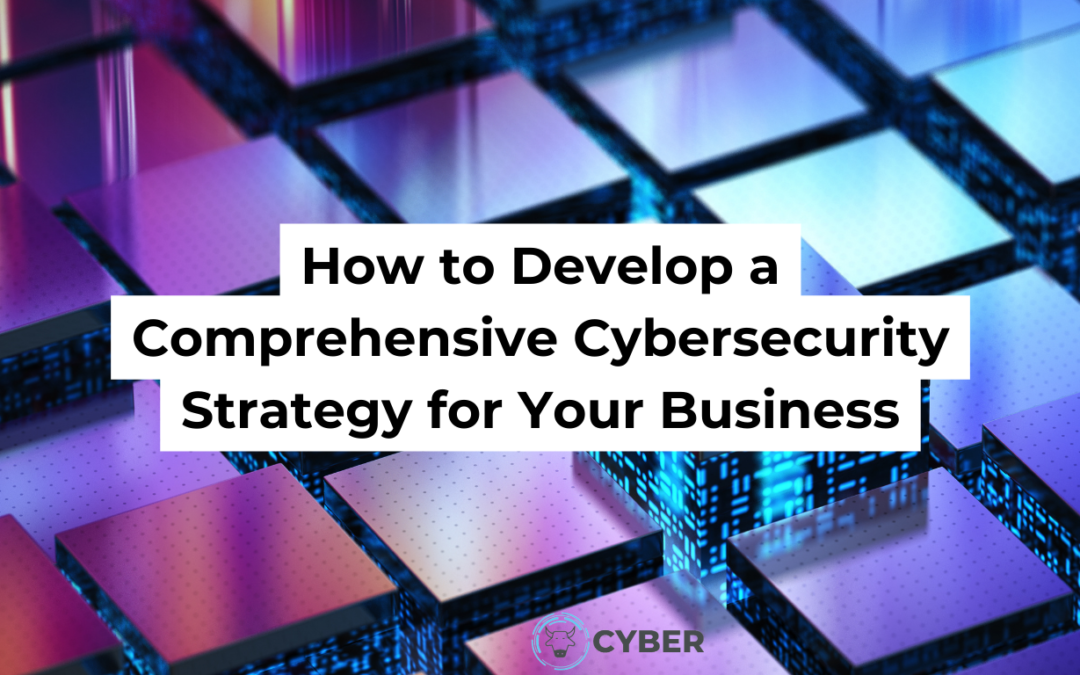In an era where cyber threats are increasingly sophisticated and prevalent, developing a comprehensive cyber security plan is essential for any small business. A robust plan not only protects your business from data breaches and cyber attacks but also ensures regulatory compliance and fosters trust with your customers. Here’s a step-by-step guide on how to create a cyber security plan tailored to your small business.
Assess Your Current Cyber Security Posture
Begin by evaluating your current cyber security measures. Identify what protections you already have in place and where there are gaps. This assessment should include:
- Hardware and Software Inventory: List all devices, applications, and software used in your business.
- Data Inventory: Identify what data you collect, where it is stored, and who has access to it.
- Risk Assessment: Evaluate potential risks and vulnerabilities, such as outdated software, weak passwords, or untrained staff.
Define Your Security Objectives
Establish clear objectives for what you want to achieve with your cyber security plan. These objectives should align with your business goals and address your specific risks. Examples of security objectives include:
- Protecting customer data and sensitive business information
- Ensuring compliance with data protection regulations
- Minimising downtime in the event of a cyber incident
- Enhancing overall security awareness among employees
Implement Strong Access Controls
Control who has access to your data and systems. Implement the principle of least privilege, where employees only have access to the information necessary for their roles. Use the following measures:
- Strong Passwords: Ensure all accounts use strong, unique passwords.
- Multi-Factor Authentication (MFA): Add an extra layer of security by requiring additional verification steps.
- Role-Based Access Control (RBAC): Assign access based on job roles and responsibilities.
Keep Software and Systems Up to Date
Regularly updating your software and systems is crucial in protecting against vulnerabilities. Enable automatic updates where possible and establish a routine for checking and applying patches. This includes:
- Operating Systems: Ensure all devices run the latest version of their respective operating systems.
- Applications: Update all software applications, including antivirus and anti-malware programs.
- Firmware: Don’t overlook firmware updates for hardware devices.
Backup Your Data
Regular data backups are vital for recovering from a cyber incident. Implement a backup strategy that includes:
- Regular Backups: Schedule automatic backups at regular intervals.
- Offsite Storage: Store backups in a secure offsite location, such as a cloud service or physical storage.
- Testing: Regularly test your backups to ensure data can be restored quickly and completely.
Train Your Employees
Employees are often the weakest link in cyber security. Regular training can significantly reduce human error and increase awareness. Your training programme should cover:
- Recognising Phishing Attacks: Teach employees how to identify and avoid phishing emails.
- Safe Online Behaviour: Promote best practices for internet usage, such as avoiding suspicious links and downloads.
- Reporting Procedures: Ensure employees know how to report potential security incidents promptly.
Establish Incident Response Procedures
A well-defined incident response plan is essential for minimising the impact of a cyber attack. Your plan should include:
- Identification: How to detect and identify a cyber incident.
- Containment: Steps to contain the incident and prevent further damage.
- Eradication: Methods to remove the threat from your systems.
- Recovery: Procedures to restore systems and data to normal operation.
- Communication: A communication plan to inform stakeholders, including customers, employees, and regulatory bodies.
Secure Your Network
Protect your network from unauthorised access with the following measures:
- Firewalls: Implement and configure firewalls to block unwanted traffic.
- Encryption: Encrypt sensitive data, both in transit and at rest.
- Wi-Fi Security: Ensure your Wi-Fi network is secure with strong passwords and encryption. Use a separate network for guests.
Monitor and Audit Regularly
Continuous monitoring and regular audits help detect and address security issues promptly. Implement:
- Security Information and Event Management (SIEM): Tools that provide real-time analysis of security alerts.
- Regular Audits: Conduct periodic audits of your security practices and policies.
- Vulnerability Scanning: Regularly scan your systems for vulnerabilities and address them promptly.
Stay Informed and Adapt
Cyber threats are constantly evolving. Stay informed about the latest threats and update your cyber security plan accordingly. Join industry groups, subscribe to cyber security newsletters, and attend relevant training and seminars.
TL;DR:
Developing a comprehensive cyber security plan is not a one-time task but an ongoing process that requires vigilance and adaptation. By following these steps, you can protect your small business from cyber threats and ensure the security and integrity of your data. For more detailed guidance, consider consulting resources from the National Cyber Security Centre (NCSC) and the Information Commissioner’s Office (ICO).
Implementing a robust cyber security plan will not only protect your business but also enhance your reputation and trustworthiness for potential and current customers.

